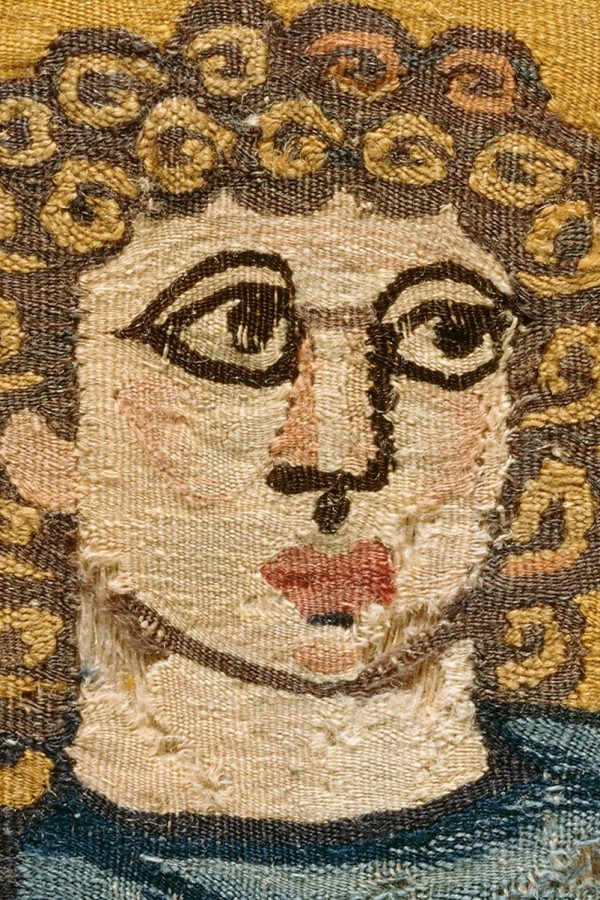What emotions is this person feeling?

Dionysus,
c. 250–450 CE
-
Bright emotions
-
Not at all Extremely
-
-
Quiet emotions
-
Not at all Extremely
-
-
Heavy emotions
-
Not at all Extremely
-
-
Sombre emotions
-
Not at all Extremely
-
Compare yourself to others
Choose different variables below, and see the patterns of response reflected in the circle of emotion above. Your responses are the coloured wedges. Others' responses are averaged in the spider graph of lines and dots.

Date: c. 250–450 CE
Creator of the image: Unknown Date of the image creation: c. 250–450 CE Medium of the image: Wool on linen base Person depicted: Dionysus Dionysus is the Greek God of wine, ritualistic fervour, theatre and religious ecstasy. His mother was a mortal, Semele, daughter of the King of Thebes and his father was Zeus the king of the gods. According to the authors of Masterpieces in the Collection of Greek and Roman Antiquities, which functions as a guide to the Kunsthistorisches Museum in Vienna, Austria where the fabric is held: ‘The picture of the god Dionysus was created on a separate piece of wool fabric in the so-called Coptic weaving technique and sewn onto a natural-coloured linen sheet. The identity of the subject is clearly indicated by the Greek inscription above the head. An edging of acanthus tendrils frames the picture. The Greek god Dionysus was equated with the Egyptian god Osiris and was a popular motif in Egypt in late antiquity. According to the classical myth, Theseus abandoned Ariadne on the Greek island of Naxos, where Dionysus found her and made her his bride. The youthful Dionysus is looking to the left. His blond curls fall down the back of his neck, and his head is emphasised by a golden-yellow halo. He is wearing a blue mantle fastened at his right shoulder with a disc fibula. Executed in the Hellenistic tradition, the central picture has a broad surface and a few heavily bordered details. The characteristic large eyes, straight nose, heart-shaped mouth and spiral curls are depicted in a simplified manner. The face is pale pink; the folds of the mantle are sculpturally accentuated with thin lines. Symbolic of fertility and expectation of life in the Beyond are the fruit, buds, flowers and birds in the multi-coloured arabesques of the edging. The precious textile probably comes from a necropolis in the Upper Egyptian city of Panopolis on the eastern bank of the Nile. The fragment was part of a larger sheet of fabric — originally probably an ornamental bedspread or a wall hanging — later used as a shroud for the deceased.’